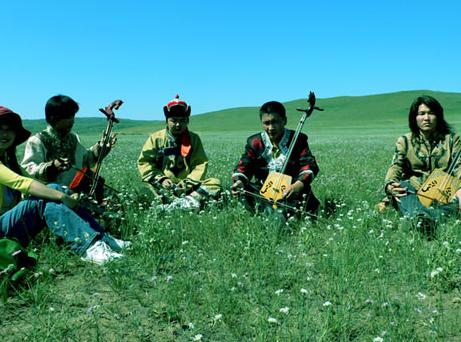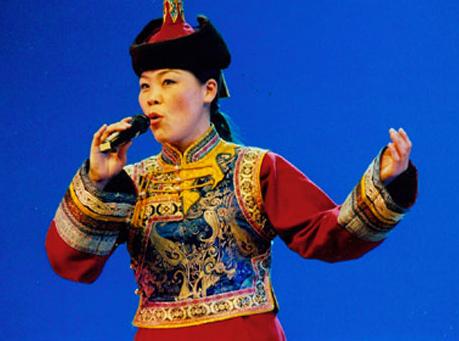
Hoomei(Humai) is a kind of miraculous singing art created by the Mongolian people. It is featured by one singer's singing of two voice parts simultaneously with his own vocal organs. Basic structure of voice-part relation in Humai is the combination of a lasting undertone with rhythms flowing on it. Humai can be divided into Overtone Humai, Tremolo Humai, Complex Humai, etc. It is a unique form of art among folk songs of other ethnic groups in China.
Textual research reveals that Humai can be traced back to the Hun Period. It came into existence closely before or after the formation of the Mongolian minority at the latest. Primitive people living on the Mongolian Plateau used to imitate the sound of nature at the time of hunting and nomadic grazing. They believed that it was an important means to effectively communicate and coexist harmoniously with the nature and the universe. It is from then on that certain potential in vocal organs of the humankind was tapped. When imitating the sound of waterfall, alp, forest and animals, one could make a "harmony", which is the incipient form of Humai.

As a form of laryngeal singing art, Humai is performed with special voice skills. One singer may use two voice parts to sing at the same time, with deep fundamental tones being uttered by vocal cords, while loud overtones being uttered from oral cavity. Such fundamental tones and overtones, together with breath control and change in syntonous point in oral cavity, will create rhythms in treble part and form a rare pattern of multiple voice parts. High-pitched voice in treble part has a direct bearing on the shape of mouth: high-pitched voice may be created by flat mouth, while low-pitched voice may be uttered from round mouth. The distance between undertone part and high-tone part may be as high as six octaves. Rhythms created by high-tone part are sometimes similar to whistle or metallic sound. To sing Humai, relax vocal cords first, create resonance by vibrating vocal cords with the air in the mouth, utter fundamental undertone, and subtly regulate interspace at the apex of tongue, and then utter high overtone with the concussion of a rush of breath. In this way, high-pitched tunes may be generated continuously on the basis of constant undertones. Singing with this method can create two clear voices simultaneously, that is, high-pitched tunes and continuous undertone.
Generation and development of Humai is a result of the progress in Mongolian music. It symbolizes a qualitative leap-forward in the cognition and proficiency of acoustic rules. Such singing method is praised by experts in vocal music as "high as reaching the top of welkin, low as touching the bottom of sea, and vast as the boundless land".





